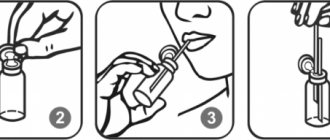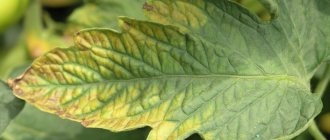The benefits of tar and the advantages of its use in the garden
Birch tar is a natural and safe remedy that has long been successfully used in households, folk medicine, cosmetology, gardening and horticulture due to its many beneficial properties (antiseptic, antiparasitic, antimicrobial). It contains resins, paraffin, organic acids, phytoncides, natural antiseptics (phenol), guaiacol...
Of course, we do not urge you, following the example of your ancestors, to lubricate cart wheels with tar or tan leather with it, but, believe me, it is very advisable to use it in the garden. Due to its sharp, specific odor, it works as an excellent repellent for harmful insects and small mammals, and the healing properties of tar help plants fight various diseases.
The use of birch tar on the site, compared to conventional pesticides, has many advantages:
- the drug is safe to use for humans;
- works against a wide group of garden and vegetable pests - from mammals to insects;
- does not cause addiction to insects;
- does not destroy pests, but only scares them away, which is especially important in the case of forest mammals that are “undesirable” only on a personal plot;
- does not require complex equipment for use or even self-production (see below);
- can be used in several ways at once (including without contact with the plant itself, so as not to have a negative effect on it);
- has a long-term protective effect - from three to four weeks to the full growing season.
Harm of tar
Any tar poses a certain danger. Even pure birch applied to the skin of the face can lead to various problems. But those extracted using complex chemical methods are much more dangerous. For example, tar extracted from oil poses a danger even during normal storage. It is enough to inhale the vapors emanating from it to get serious poisoning.
Therefore, it should be handled with the utmost care. As mentioned above, when applied to the face, natural wood tar must be diluted with any cream. Then it lasts a very long time, acquires a pleasant smell and will not cause skin problems. Well, most people are not familiar with complex chemical analogues. Anyone who encounters it at work already knows perfectly well the rules for safe handling.
How to prepare tar yourself and where to buy it
Since birch tar is gaining increasing popularity in various fields, from gardening and gardening to medicine and cosmetology, you can buy it at several points at once - in a regular pharmacy, in specialized garden stores, in online stores.
If you need large volumes of this product, and you are not afraid to work with your hands, you can prepare birch tar yourself.
There are two types of tar - birch and birch bark. The first is obtained by dry distillation (pyrolysis) of birch chips, twigs and bark, the second is obtained only from birch bark of young birch bark. The main difference lies in the concentration of aromatic substances in the resulting substance. If birch bark tar has a fairly light odor and is used mainly for the production of medical and cosmetic preparations, then birch tar, with a pungent spirit, is a dark oily liquid and is perfect for gardeners. It is both excellent protection against various fungal diseases, an excellent antimicrobial agent, and an excellent antiseptic. This absolutely natural remedy perfectly protects against many pests of cultivated plants.
We offer you a recipe for obtaining birch tar:
- Make a hole in the bottom of a large iron container, fill the container tightly with young dry birch bark and small wood chips, and seal the lid as tightly as possible.
- Place a smaller container in a hole dug in the ground - this is where the resulting tar will collect.
- Place a large one directly above the small container - with the hole down (the tar will drain from there).
- Cover the top container with firewood and set it on fire.
- After 4-5 hours you can evaluate the first results - tar should already have collected in the lower container.
From 10 kg of birch bark you can distill approximately 3 kg of tar.
Pharmacy and store-bought tar will already be purified and, therefore, more effective than homemade. This does not apply to cosmetic preparations based on tar - for example, tar soap - there is so little tar that they will be almost useless as a repellent in the garden.
Birch tar - secrets of effective use
- 3.1 How to apply tar externally for skin and hair diseases?
What is birch tar?
Birch tar is a product of wood pyrolysis. Produced in tar mines.
It is a thick liquid, black in color with a blue or green tint, with a consistency reminiscent of machine oil.
It has a specific smell. Known as “Russian butter”.
How is birch tar obtained?
The production raw material for this product is the outer part of birch bark, separated from the inner bast layer.
The technological process for producing tar is reduced to slowly heating the bark to a temperature of 200-300°C without access to oxygen.
Raw materials decompose releasing tar, gas components and water.
The quality of the final product is determined by the quality of birch bark, the type of technological installation, and operating mode.
Raw materials can be classified as follows:
- pure sap birch bark;
- bark obtained from dead wood, dead wood (the admixture of bast is up to 30%);
- sanding birch bark (bast admixture up to 75%).
Depending on the raw materials used, tar is divided into:
- tar of the first grade;
- tar II grade;
- tar of lower grades.
Chemical composition of birch tar
Birch tar contains a number of aromatic substances, such as:
- toluene;
- xylene;
- phenol;
- betulin;
- tereben;
- guaiacol;
- xylenol;
- betuloside;
- wintergreen
It may also contain up to 15% tannins.
Essential oils and alkaloids, leukoanthocyanins and a number of catechins, characterized by vascular strengthening properties, have been isolated from the bark.
Birch tar contains carcinogenic substances, but in small quantities.
How and against which garden pests tar is used
As a substance that acts primarily due to its pungent odor, tar in the garden is more effective against those pests that have a keen sense of smell, as well as underground inhabitants (where the smell does not erode and disappear longer) - mole crickets, small mice, moles . Treatment against them, in connection with the situation described above, is usually sufficient to carry out once a season; the repellent effect of tar in the soil lasts more than a month.
As a repellent, tar in the garden can also be successfully used against flying insects (Colorado beetle, butterflies, moths, flies, sawflies, etc.) and ground rodents - however, it has a weaker effect on them and takes less time, about 20 -30 days, so treatments will have to be repeated.
Tar has the weakest effect (several days) on ants and most adult beetles (bronze beetles, click beetles, weevils). Fighting these pests with tar alone will not be entirely successful; you will have to combine it with other drugs.
Tar in mixtures is incompatible with almost all synthetic pesticides and biological products - it is even recommended to store them in different rooms. But the product combines well with minerals and natural extracts. Their combined use even enhances their mutual effect.
So, what pests and diseases does tar help against in the garden? Here are 21 ways to use this popular product.
Birch tar from the Colorado potato beetle
Potatoes, eggplants, tomatoes and peppers will thank you if you spray them with a tar solution against the Colorado potato beetle.
The solution is prepared as follows: 10 ml (2 tsp) of tar and 50 g of laundry soap are dissolved in 10 liters of warm water. You can spray the plants with it (before the start of flowering, during the appearance of buds and during the period of intense flowering) or generously moisten the bushes, as well as the soil between the rows until a wet film forms on the leaves.
Birch tar from the mole cricket
Tar will help save your plants from mole crickets in several ways.
The first is the treatment of seed and planting materials - for example, lubricating the tubers with an undiluted preparation. The second method is to spray the already risen plants with the above-described tar-soap solution (soap here acts as an adhesive).
Birch tar from moles (hamsters, marmots)
Moles, hamsters, marmots and other burrowing mammals can also be expelled from the site in different ways. For example, by plugging all discovered entrances to their burrows with pieces of cloth, richly soaked in undiluted tar, and covering them with earth. For such impregnation, you can also use a tar-oil mixture (3 parts tar to 1 part vegetable oil). It is better to start all these activities in early spring; in the summer it may be too late.
Another way is to drive small (about 20x4 cm) wooden pegs throughout the area at a distance of 3-4 m from each other, generously greased with tar at the bottom. If necessary, they can be dug up from time to time and the “fragrant” treatment renewed.
Birch tar from hares (mice, voles)
To protect trees and shrubs from rodents such as mice and hares, autumn mulching of the tree trunks of plants with sawdust soaked in tar solution (1 tablespoon of tar per 10 liters of water), and autumn whitewashing of the bottom of trunks and lower branches with a special solution (10 liters of fresh manure, 1 kg of ready-made whitewash and 3 tablespoons of tar, dilute with water to the consistency of thick kefir).
Birch tar from onion fly
To get rid of the attention of the onion fly, it is recommended to soak the planting material of onions and garlic literally half an hour before sowing in a tar solution (1 tsp of tar per 1 liter of water).
After germination of the seedlings, it is also worth watering the rows of these plants with a solution prepared from 10 liters of water, 30 g of soap and 1 tbsp. tar, repeating the procedure again after 10-15 days.
Mulching the beds with sawdust soaked in a tar solution also helps (see preparation diagram above).
Birch tar from cabbage fly
To combat cabbage fly on cruciferous crops (radish, cabbage, turnips, horseradish, etc.), a tar solution is used (1 tablespoon of tar per 10 liters of water), which is poured onto beds mulched with sawdust. The procedure is carried out in early spring and the mulch layer is renewed in early August.
Birch tar from sea buckthorn fly
A fly that damages sea buckthorn plantings can also be repelled by the smell of birch tar. To do this, small containers with it are hung inside the bush or pegs wrapped in rags soaked in tar are driven in nearby.
Birch tar from carrot fly and psyllid
Tar also helps carrots - to escape from carrot flies and psyllids, which also do not like its smell.
You already know the recipe - 10 liters of warm water + 1 tbsp. birch tar. Carrot beds are watered with this solution on pre-moistened soil twice a season (in July and August). If the insect infestation is large, you can water the beds a couple more times, and also spray them - then 20-30 g of soap shavings should be added to the above solution as an adhesive.
Birch tar from sprout fly
Treatment with the solution described above also helps against germ flies on all pumpkin crops (cucumbers, zucchini, pumpkin, squash). Vegetable seedlings are sprayed with a solution against this pest.
Birch tar from sawfly
There are several types of sawfly (gooseberry, cherry, etc.) that damage a wide variety of plants: white and red currants, gooseberries, cherries, pears, plums, apple trees. However, all these pests cannot tolerate the smell of tar, so they can be successfully controlled using this product.
The bushes are sprayed 3-4 times per season with the following mixture: dissolve 100 g of grated laundry soap, half a glass of ash and 2 tbsp in 1 liter of boiling water. tar, dilute the mixture with 5 liters of warm water.
The trees will also have to be sprayed several times a season (at the beginning of the leaves blooming, and then, if necessary, at weekly intervals) with a solution already familiar to you: 10 liters of water, 1 tbsp. birch tar, 30 g of soap.
Birch tar from wireworm
Potatoes, carrots, beets, radishes and other root vegetables need to be protected from wireworms, including this can be done with the help of tar.
In advance, you can etch the seed for 40-50 minutes in a tar solution (1 tablespoon of tar per 10 liters of water) and moisten the wells with the same solution before planting. Plants grown from seeds are simply watered with this solution several times a season at intervals of 2-3 weeks.
Birch tar from aphids
Copious spraying of plants with a tar solution a couple of times a season at intervals of about a month helps against aphids.
The solution is prepared as follows: 50 g of tar soap is crushed, dissolved in 1 liter of boiling water and stirred. After complete dissolution, add 1 tsp. tar and another 20 liters of water.
Birch tar for ants
If we already mentioned aphids, let us immediately remember their almost constant companions - ants, against which tar also helps to fight.
Trees on which ants “graze” aphids are generously smeared with undiluted tar along the trunk or wrapped in rags soaked with it - constructing a kind of hunting belt. If the ants have settled right in your garden, you can pour a few milliliters of pharmaceutical tar on the top of the anthill - the insects definitely won’t like it, and they will most likely leave the inhospitable area.
Birch tar for spider mites
If you notice signs of spider mite activity on your plants, treat these places with a soap-tar solution that is already familiar to you (10 liters of warm water + 10 ml (2 tsp) tar + 50 g of laundry soap), paying special attention to the underside of the leaves .
Birch tar from cabbage whiteweed
The cabbage butterfly (cabbage white butterfly), familiar to all gardeners, can easily be scared away from plantings by its tarry smell. To do this, place pegs in the garden, wrapped at the ends with rags soaked in undiluted birch tar. Additionally, sawdust soaked in a water-tar solution can be laid out on the beds - this will also help against other insect pests.
Birch tar from gooseberry moth
The gooseberry moth, which harms gooseberry and currant thickets, actively damages the ovaries of these plants. To combat it, before flowering, berry bushes should be sprayed with a tar solution (1 tablespoon of tar and 20 g of soap shavings per 10 liters of water), and then simply hang containers with tar on the branches inside the bush.
Birch tar from codling moth
Garden plantings very often suffer from the “work” of the codling moth. Apple, cherry, plum - all its types are equally dangerous and can destroy up to half the crop. The caterpillars of this insect spend the winter period under the bark of a tree, and during the flowering period, having already turned into butterflies, they begin laying eggs in the lower part of the leaves. The moths that hatch from them feed on the fruits.
Therefore, while the butterflies have not yet flown out (at the beginning of flowering) and immediately after flowering, the trees and the soil under them can be sprayed with the already familiar odorous tar solution with water and soap. Small containers with tar solution (1 tsp of tar per 5 liters of water), suspended in the crown of trees shortly before they begin to bloom, will also be useful.
Birch tar from hawthorn
Hawthorn larvae work on crops of the Rosaceae family (apple, cherry, pear, plum, apricot, etc.) similar to the codling moth, actively eating buds, young leaves and buds, only the insect overwinters in nests located on the leaves, which are pre-wrapped with cobwebs . These nests need to be removed first. Then the soil under the tree and the plant itself are treated with a tar solution (traditionally, 1 tablespoon of tar and 30 g of planed soap are taken per 10 liters of water). The first treatment is carried out in the “green cone” phase, the second – shortly before flowering (April), and the subsequent ones immediately after flowering with an interval of two weeks (depending on the presence of caterpillars).
Birch tar from raspberry-strawberry weevil
Raspberry, blackberry and rose hip bushes are often damaged by the raspberry-strawberry weevil: dried ovaries are clear proof of this. Therefore, before the buds appear, the berry bushes should be generously sprayed with a water-tar solution with the addition of soap (see recipe above). After a week, the procedure can be repeated.
Birch tar from cherry weevil
The cherry weevil feeds not only on leaves, but also damages young shoots of stone fruit trees, buds, ovaries and inflorescences, and after the fruits ripen, it gets to them. To combat this pest, also dissolve the familiar mixture of tar and soap in a bucket of water and thoroughly moisten the trees from the sprayer with this fragrant solution. Carry out the procedure in early spring before the buds open, then repeat when the buds open and shortly before flowering.
Birch tar against scab and other bacterial and viral diseases
Tar can also save your plants from many bacterial and viral infections that can leave you completely without a harvest. To prevent their development, fruit trees and shrubs are generously treated with the above-described tar-water solution with the addition of soap (only more tar should be taken, 1.5-2 tbsp.) or lubricated with a mixture of undiluted tar and ash (2:1) the period of appearance of young leaves.
Disadvantages of using tar in the garden
There will be no real harm from birch tar as such on the site - it is not poisonous to people (there are many drugs based on it in medicine and cosmetology), it repels most pests and does not kill them, and does not accumulate in large quantities in plants. However, there are also some inconveniences and disadvantages when using it in gardening and horticulture. Let's list some:
- A strong, unpleasant smell for many that can scare away even neighbors and relatives from the site.
- It works equally on both harmful and beneficial insects - you risk being left without helpers in the garden.
- Tar cannot be used on fruits and edible green mass, because their taste and smell deteriorate.
- For the same reason, its use in an apartment for indoor plants is excluded.
- Concentrated tar is toxic; working solutions with it must be prepared with precautions for substances of the 3rd hazard class.
- Working solutions (mixtures) are difficult to mix with other substances (due to the insolubility of tar in water) and quickly separate when left alone - they need to be used within an hour or two.
- Clothes stained with tar are not washed, and the metal parts of the sprayers are practically not cleaned (only with organic solvents).
You see for yourself that such a simple remedy as birch tar can rid your garden of many flying and crawling pests - maybe it’s worth a try?
What is tar?
Let's start with the fact that tar is a liquid product - in most cases, tree resin. Its composition is very complex. It largely depends on how the tar was made and from what raw materials it was extracted - we’ll talk about this a little later. May contain benzene, phenol, a number of resins, toluene, cresol, guaiacol and other complex components.
It practically does not dissolve in water, since it has a lower density, spreading over the surface. But it dissolves quite quickly in alcohol and alkali, often losing some of its original properties.







